Room to Grow:
New Michael W. and Quirsis V. Riney Family Greenhouse Enables New Discovery and Possibilities
It’s a good problem to have. Innovative plant science requires cutting-edge technologies. The Danforth Center’s core facilities equip our scientists with state-of-the-art instrumentation and expertise to do ground-breaking research. This critical infrastructure serves as a hub of collaboration, attracting partners and new companies to the region. So what happens when it succeeds a little too well?
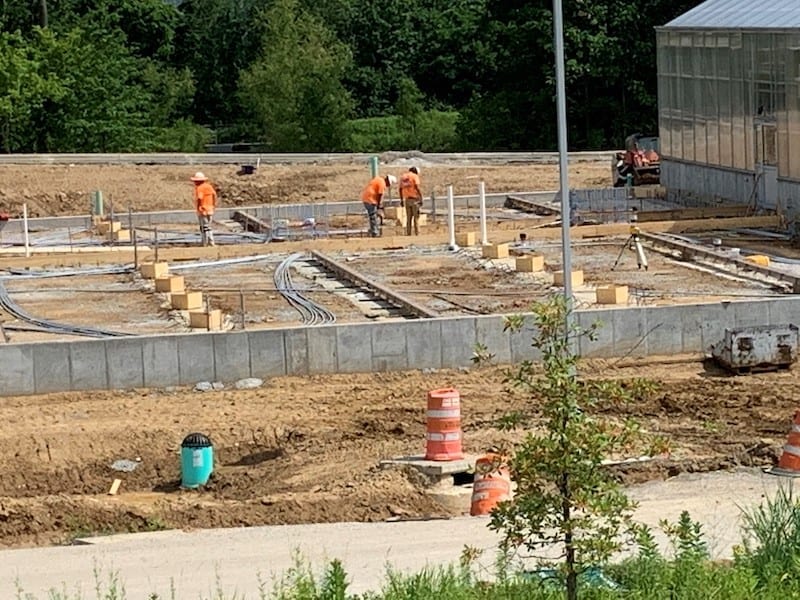
Construction, summer 2020. The new cutting-edge Michael W. and Quirsis V. Riney Family Greenhouse facilities will provide much-needed space to researchers, speed progress, and attract more startups to our region.
The Danforth Center’s Plant Growth Facility has seen tremendous growth. This cutting-edge research complex provides users with access to a variety of controlled environments as well as expert horticultural services. It encompasses 54,000 square feet of greenhouses and 82 advanced climate control growth chambers—but it is no longer enough.
In recent years, skyrocketing demand for research-grade greenhouse space has meant the facilities were almost always full and the waiting list was growing. Besides the challenge of capacity, there was also the Danforth Center drive to innovate and keep pushing the boundaries of experimentation. It was time to expand.
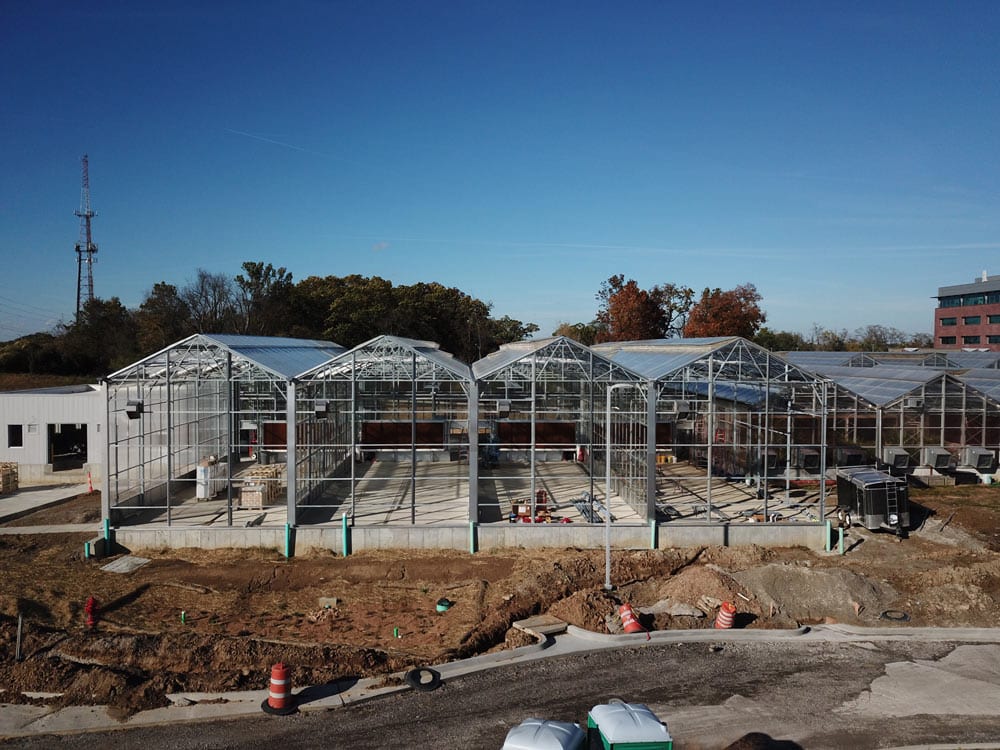
Several new greenhouses feature 20-foot-tall ceilings equipped with adjustable lighting canopies. The Michael W. and Quirsis V. Riney Family Greenhouse allows scientists to grow crops to their natural height, while better controlling light and temperature.
From Groundbreaking to Commissioning
In late 2019, construction began on the new Michael W. and Quirsis V. Riney Family Greenhouse. The work expands total space available from 54,000 to nearly 66,000 square feet: more than 1.5 acres of greenhouses. The new greenhouse not only adds more space, but additional cutting-edge features and increased energy efficiency as well. These facilities will advance the work of Danforth Center scientists and other sustainable ag partners aiming to feed the world and heal the planet. (Several new features are highlighted below.)
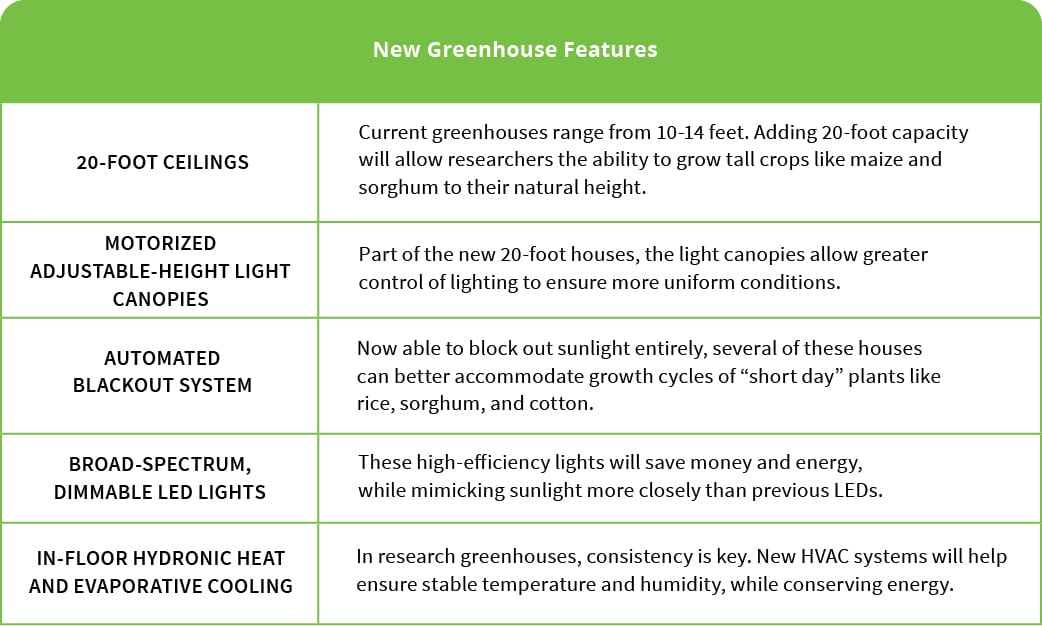
Opening a new greenhouse is called “commissioning,” and it comes with a special set of punch-list items. First, the complicated computer control systems need to be tested – a process undertaken by the manufacturer, Argus Control Systems Ltd. “The technician said he was very impressed with the technological level of our greenhouses,” notes Danforth Center Greenhouse Manager Sally Fabbri. “That’s high praise, given their expertise.”
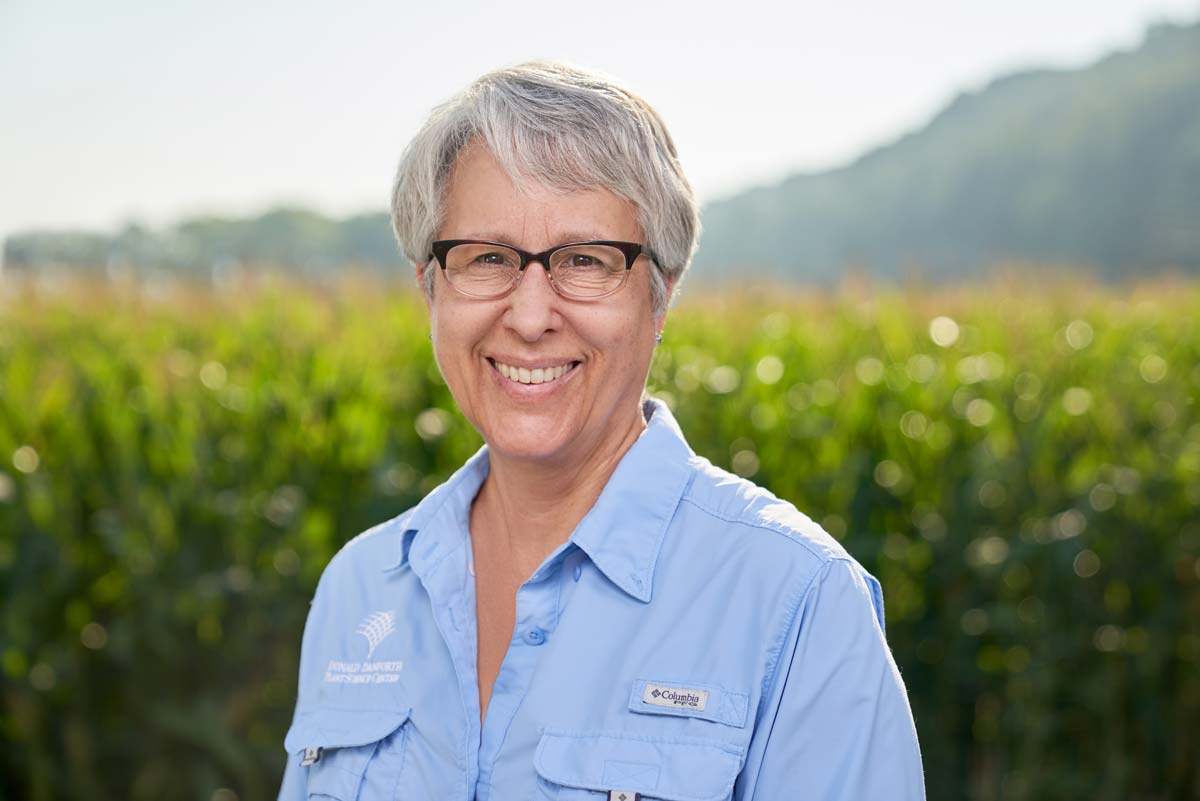
“The Argus technician was very impressed with the technological level of our greenhouses. That’s high praise, given their expertise.”
Sally Fabbri, Danforth Center Greenhouse Manager
Next, the horticulturists must test the facilities. Fabbri reports that she and her team have been growing plants sequentially for just this purpose. Every two weeks, they start more corn, sorghum, soy, and model research plant foxtail millet. “We will put those plants in the new greenhouse, so that we have plants at multiple developmental stages to validate all the functions of the new facilities.” If all is well, it will be all systems “go” later this spring for the new Michael W. and Quirsis V. Riney Family Greenhouse.
Why It Matters
Danforth Center scientists conduct research at the nexus of food and the environment. Through this work, we help enhance the St. Louis region as a world center for plant science. Access to state-of-the-art facilities and expertise is critical to agtech and biotech startups, and the Danforth Center provides that access, helping ensure success at BRDG Park, Helix Center, and 39 North.
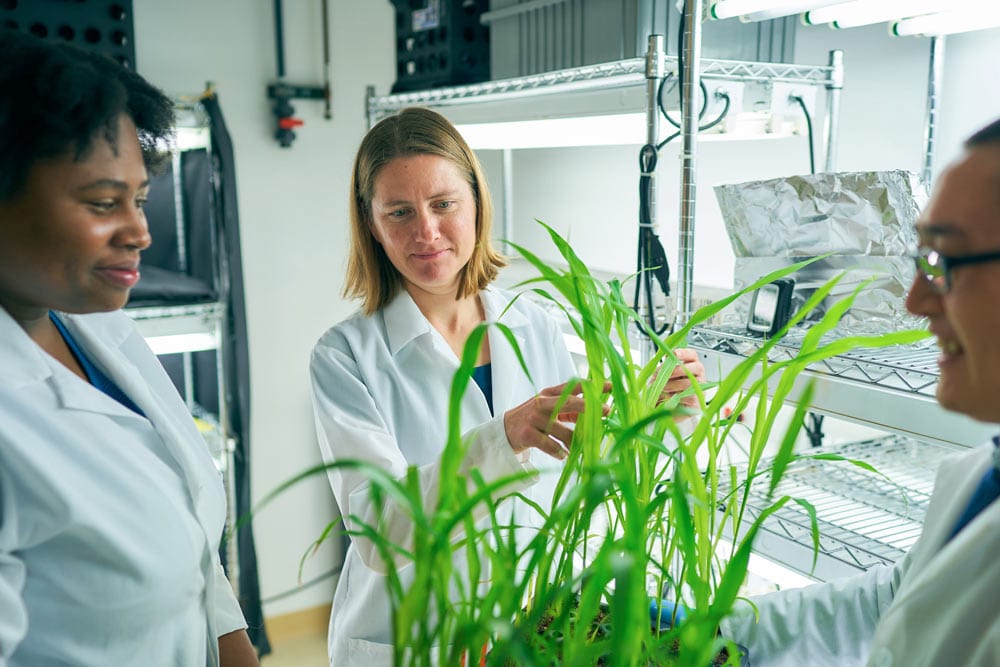
Dr. Becky Bart, a plant pathologist, studies cotton among other crops. Cotton is a short-day plant, so Dr. Bart will be able to take advantage of the new light-controlling blackout system.
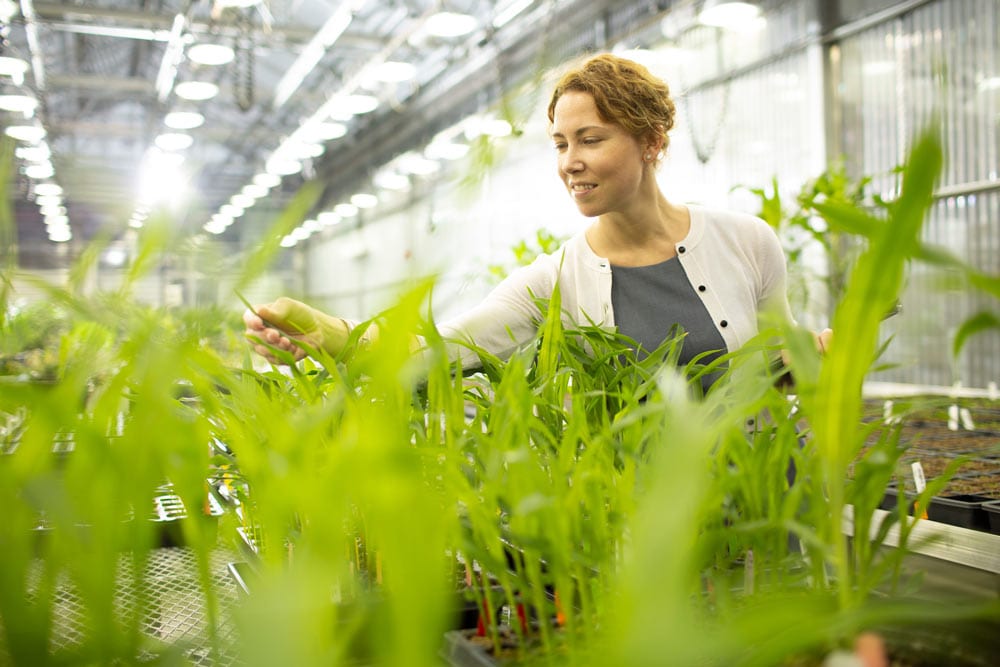
Scientists like Dr. Andrea Eveland, who specialize in tall crops like sorghum and maize, will have opportunity for new kinds of research in the taller greenhouses.
“With a unique combination of advanced environmental controls, improved energy efficiency, and flexibility to accommodate a wide variety of research, the Michael W. and Quirsis V. Riney Family Greenhouse will accelerate discovery for the Danforth Center and our partners.”
Kevin Reilly, Director, Danforth Center Plant Growth Facility
The Need
This project is supported by leadership donors Quirsis and Michael Riney, other contributors to the Impact Fund, and the Missouri Development Finance Board. Tax credits are still available for qualified donors. Contact the Development team at 314.587.1234 or email development@danforthcenter.org for more details.
About
A version of this story originally appeared in the Leaflet, the free newsletter of the Donald Danforth Plant Science Center. Sign up to receive more stories like this straight to your inbox.